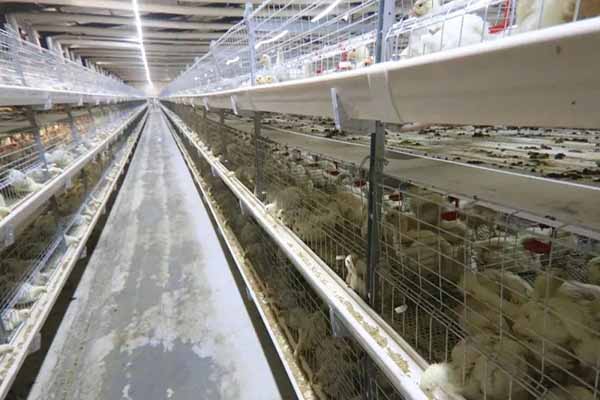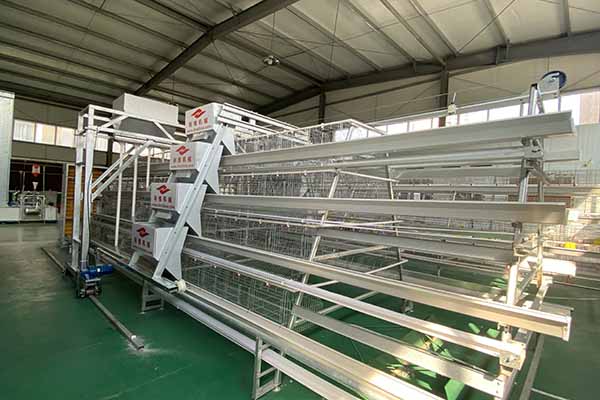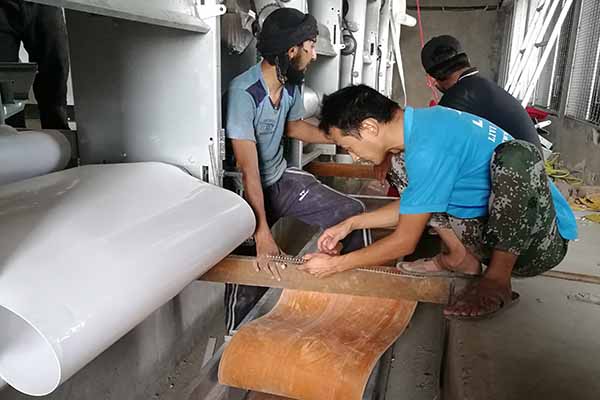Tanzania Chicken Farm Automation Equipment: Service Life and Optimization
Time : 2025-06-27
The poultry industry in Tanzania has witnessed significant growth over the years, with an increasing number of farmers adopting automation in their chicken farms. Automation not only enhances efficiency but also improves the overall health and welfare of the chickens. One critical aspect that is often overlooked is the service life of the automation equipment. This article delves into the importance of service life, factors affecting it, and strategies for optimizing the performance and longevity of automation equipment in Tanzania’s chicken farms.
Understanding Service Life of Chicken Farm Automation Equipment
The service life of automation equipment refers to the period during which the equipment operates efficiently without the need for major repairs or replacements. In the context of Tanzania’s chicken farms, the service life of automation equipment can be significantly extended with proper maintenance and care.
1. The Role of Quality Equipment
Investing in high-quality automation equipment is crucial for extending its service life. Equipment that is made from durable materials and designed to withstand the harsh conditions of chicken farms in Tanzania will naturally have a longer lifespan. It is essential for farmers to research and choose equipment from reputable manufacturers that offer long-term warranties and reliable customer support.

2. Regular Maintenance
Regular maintenance is key to ensuring the optimal performance and longevity of automation equipment. This includes scheduled cleaning, lubrication, and inspection of all moving parts. Dust and debris can accumulate in the machinery, leading to overheating and reduced efficiency. Regular maintenance helps prevent these issues and can catch potential problems before they become major setbacks.
Factors Affecting Service Life
Several factors can impact the service life of automation equipment in Tanzania’s chicken farms:
1. Environmental Conditions
Environmental conditions play a significant role in the wear and tear of automation equipment. Tanzania’s chicken farms often operate in dusty and humid conditions, which can accelerate the corrosion of metal components. Proper ventilation and temperature control measures should be implemented to mitigate the impact of these conditions.

2. Operator Knowledge and Skills
The knowledge and skills of the operators using the equipment are also critical. Operators who are not properly trained may inadvertently damage the equipment through misuse or improper handling. Regular training sessions for operators can help prevent accidents and extend the life of the equipment.
3. Quality of Spare Parts
When maintenance and repairs are required, the quality of spare parts is crucial. Using counterfeit or substandard parts can lead to further damage and reduce the  overall service life of the equipment. It is important to source genuine spare parts from reputable suppliers.
overall service life of the equipment. It is important to source genuine spare parts from reputable suppliers.
Strategies for Optimization
Optimizing the performance and longevity of automation equipment in Tanzania’s chicken farms involves a combination of the following strategies:
1. Training and Education
Regular training programs should be conducted for all farm staff, emphasizing the importance of maintenance, proper handling, and the recognition of potential issues. A well-trained workforce is more likely to take care of the equipment, thereby extending its service life.
2. Implementing Preventive Maintenance
Adopting a preventive maintenance schedule can significantly reduce the likelihood of unexpected breakdowns. This includes regular checks, maintenance, and replacement of parts as needed. Preventive maintenance also helps identify and resolve issues early, before they escalate into costly repairs.
3. Utilizing Monitoring Systems
Installing monitoring systems that can track the performance of automation equipment can provide valuable insights into its condition. Real-time data on equipment usage, temperatures, and pressures can help identify issues before they become significant problems.
Conclusion
In conclusion, the service life of automation equipment in Tanzania’s chicken farms is a critical factor that can significantly impact the overall efficiency and profitability of the operation. By investing in high-quality equipment, implementing regular maintenance, and optimizing operation practices, farmers can extend the service life of their automation equipment, leading to a more sustainable and profitable chicken farming operation.
Understanding the factors that affect service life and implementing strategies for optimization are essential for ensuring the long-term success of Tanzania’s chicken farms.











